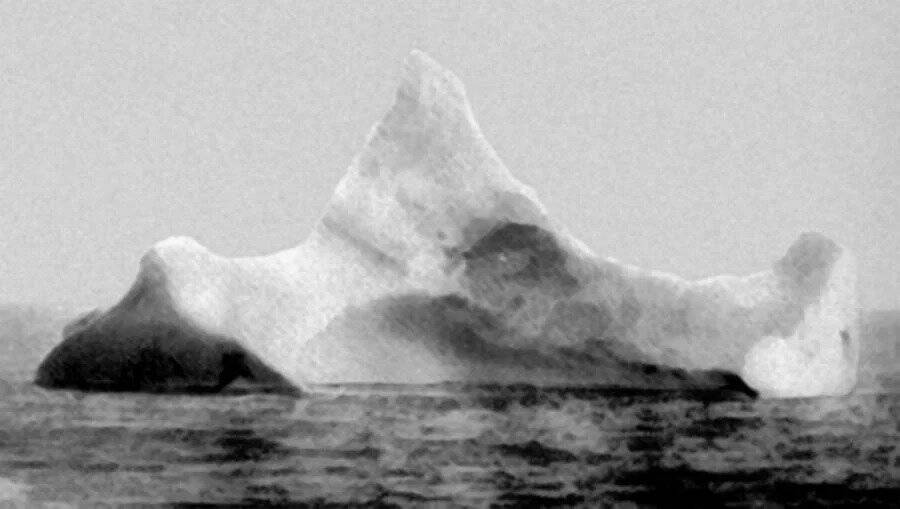From the very moment the ship struck an iceberg to the eerie calm that followed before all hell finally broke loose, this is the story of the fateful collision that took down the Titanic.
At 10:00 p.m. on April 14, 1912, a 25-year-old Londoner named Frederick Fleet assumed his post in the crow’s nest aboard the RMS Titanic along with his lookout partner, Reginald Lee.
The two men had been warned to keep an eye out for small bits of ice in the water, a task made especially difficult on this particular night because of the moonless sky above. Meanwhile, the calm seas also made it harder to see anything clearly in the water. Without the waves breaking against the icebergs, the icebergs themselves were effectively invisible.
It also didn’t help that the two lookouts hadn’t been issued binoculars. Though it was never proven, some later said that when Officer David Blair was removed from the crew of the Titanic‘s maiden voyage at the last minute, he mistakenly walked off with the keys to the cabinet that held the binoculars in his pocket. Thus, no one could access them.

Wikimedia CommonsThe iceberg suspected of sinking the Titanic, based on smears of red paint reportedly found along its side.
It’s been debated over the years whether binoculars would have helped Frederick Fleet or Reginald Lee spot the iceberg any sooner. Fleet maintained that if he had been equipped with binoculars, the disaster would never have happened. Whether he was right or not, his fateful moment in the crow’s nest would weigh on him for the rest of his life, eventually pushing him into a downward spiral of depression that ended with his suicide in 1965.
That fateful moment came at 11:39 p.m., just before his shift was to end. It was then that Frederick Fleet suddenly saw a large mass emerge directly in front of the ship. In a panic, he rang the bell three times and telephoned the bridge. Sixth officer James Paul Moody immediately picked up the phone and answered with, “What did you see?”
Fleet replied, “Iceberg, right ahead!”
Before he had even hung up the phone, the bridge crew snapped into action, turned the wheel, and sent the ship careening desperately to the left. Moody, first officer William Murdoch, and the rest of the crew on the bridge had reacted quickly – but not quickly enough. The ship’s right side scraped the iceberg, causing massive pieces of ice to rain down onto the decks.
For one brief moment, it seemed as if the ship had just brushed the edge of the ice — that it was nothing more than a near miss. But the gravity of the impact soon became clear. And over the next two hours and 40 minutes, the unsinkable ship would be swallowed by the Atlantic.
Next, go back and listen to The Titanic, Part 1: Building The ‘Unsinkable Ship’ or keep going with The Titanic, Part 3: Sinking Into The North Atlantic. Then, dig deeper into the story of the Titanic and the fateful sinking that took 1,500 lives.
Learn more about the music used in our podcast. History Uncovered is part of the Airwave Media network. Learn more about your ad choices by visiting megaphone.fm/adchoices.






